 Private aircraft safety reviews after a known model crash are an important part of the emptylegs.net client safety commitment. The recent incident over Washington, D.C., where a pair of U.S. F-16 fighter jets generated a resounding sonic boom while attempting, unsuccessfully, to establish contact with an unresponsive pilot of a privately-owned Cessna jet that had strayed into restricted airspace on Sunday triggers the review. The Cessna subsequently descended and crashed in a rural area of Virginia. The reason behind the Cessna’s presence in Washington remains unclear, but the owner of the aircraft suggested that a possible loss of cabin pressure could have rendered the pilot and passengers unconscious, potentially leading to the autopilot assuming control. Promptly dispatched from Joint Base Andrews, the F-16s were deployed to intercept the aircraft. Defense officials have clarified that the fighter jets were not responsible for the crash of the Cessna.
Private aircraft safety reviews after a known model crash are an important part of the emptylegs.net client safety commitment. The recent incident over Washington, D.C., where a pair of U.S. F-16 fighter jets generated a resounding sonic boom while attempting, unsuccessfully, to establish contact with an unresponsive pilot of a privately-owned Cessna jet that had strayed into restricted airspace on Sunday triggers the review. The Cessna subsequently descended and crashed in a rural area of Virginia. The reason behind the Cessna’s presence in Washington remains unclear, but the owner of the aircraft suggested that a possible loss of cabin pressure could have rendered the pilot and passengers unconscious, potentially leading to the autopilot assuming control. Promptly dispatched from Joint Base Andrews, the F-16s were deployed to intercept the aircraft. Defense officials have clarified that the fighter jets were not responsible for the crash of the Cessna.
Identified as a Model 560 Citation V, the Cessna met with tragedy near the George Washington National Forest close to Montebello, Virginia, around 3:23 p.m. Regrettably, there were no survivors discovered at the crash site. According to The Washington Post, John Rumpel, a 75-year-old and the proprietor of Encore Motors of Melbourne, shared that his “entire family” was aboard the plane during the crash. He mentioned that his daughter, a two-year-old granddaughter, her nanny, and a pilot were among the individuals on board.
Mr. Rumpel identified the pilot as Jeff Hefner. Records show he had an airline pilot rating that qualified him to fly Boeing 737 jets, among other aircraft, and had a top-level medical certificate as recently as October. Authorities have not released the name of the nanny. Dan Newlin, an attorney in Florida, said in an email Monday that Hefner had flown for him in the past. Newlin described the pilot as a “highly accomplished and skilled Aviator” who was survived by his wife and three kids. Our heartfelt condolences go out to the family and friends of the departed souls.
Flight Data Approximate Timeline by Flightradar24 and FlightAware:
1:13 p.m.: Departure – The Cessna takes off from Elizabethton Municipal Airport in Elizabethton, Tennessee. Its intended destination is Long Island MacArthur Airport in New York.
2:29 p.m.: Overflight – The Cessna flies over MacArthur Airport without landing and alters its course southward, commencing a journey towards Washington.
3:05 p.m.: Intercept – As the Cessna approaches the restricted airspace of Washington, two F-16 jets are dispatched from Andrews Air Force Base to intercept the aircraft.
3:23 p.m.: Rapid Descent – Flight tracking data indicates that the Cessna enters a steep spiraling descent, descending at a rate exceeding 30,000 feet per minute, ultimately leading to its crash in the St. Mary’s Wilderness area.
4 p.m.: Crash Notification – The Virginia State Police receive notification of the crash. It takes nearly four hours for rescuers to reach the crash site on foot. Unfortunately, no survivors are located.
The information provided by Flightradar24 and FlightAware helps piece together the sequence of events leading to the tragic crash of the Cessna in the St. Mary’s Wilderness.
The Cessna Citation 560 V Model
Refers to a family of business jets manufactured by Cessna Aircraft Company, a subsidiary of Textron Aviation. The specific model within this family is often referred to as the Cessna Citation V or the Cessna Citation Ultra.
The Cessna Citation 560 series was developed as an improved version of the earlier Citation II and Citation S/II models. It was designed to provide enhanced performance, increased range, and improved avionics systems. The model first entered service in 1988 and remained in production until 1994.
Here are some key features and specifications of the Cessna Citation 560:
- Performance: The Citation 560 is powered by two Pratt & Whitney Canada JT15D-5D engines, each producing 2,500 pounds of thrust. It has a maximum cruise speed of approximately 440 knots (506 mph) and a maximum range of around 1,900 nautical miles (2,185 miles) with four passengers and full fuel.
- Cabin and Seating: The cabin of the Citation 560 is typically configured to accommodate up to eight passengers, although it can be configured for a maximum of nine. The cabin features a comfortable and well-appointed interior, with seating arranged in a club configuration for optimal passenger comfort. There is also a small refreshment center and a private lavatory onboard.
- Avionics: The Citation 560 incorporates advanced avionics systems for enhanced situational awareness and navigation. The cockpit is equipped with a digital EFIS (Electronic Flight Instrument System) and a dual flight management system. It also includes weather radar, traffic collision avoidance system (TCAS), and other modern avionics equipment.
- Upgrades: In 1994, Cessna introduced an upgraded version of the Citation 560 called the Citation Ultra. The Ultra featured improved engines, extended range, and increased payload capacity. It also included a redesigned interior with upgraded materials and improved soundproofing.
Overall, the Cessna Citation 560 model, including the Citation V and Citation Ultra, is well-regarded for its reliable performance, comfortable cabin, and versatility. It has been widely utilized by corporate flight departments, charter operators, and individual owners for business and personal travel.
Our Safety Review Of Preliminary Data (purely conjecture)
Obviously, there will be an extensive review conducted by both the NTSB and the FAA regarding the crash. It can take over a year before seeing the final report, but some early data can be reviewed now to ascertain any concerns flying in a Cessna 560 V. We have three categories for aircraft we consider for clients private jet travels. Green Level is a complete passing grade with few known issues and/or crashes. Yellow Level is designated for an aircraft we now consider under review as we will grade the 560 Vs in future quotes. Basically, if we have an empty leg in this model plane, we will let the clients know upfront about the crash until we see the final report. From what we can see the pilot had ample training in larger commercial jets and has flown this model for quite sometime. We typically rule out pilot error here based on his background and training. Red Level (widespread mechanical concerns) aircraft are never quoted.
Researching the Cessna 560 V we find 71 overall incidents with the variations of this model designation of which 30 were specifically Cessna Citation 560 Vs. This data has been collected since 1995 and until now only 6 resulted in fatalities. Upon review of the events with fatalities, all were pilot and/or crew errors. One of the crashes was on January 9th, 2021 in Pine Grove Oregon where it seems that the pilot did not have enough Cessna 560 training to be single pilot exempt, and he was the only soul lost. Then back on December 18th, 2018 four souls were lost in a 560 Vs with probable cause listed as “the pilot’s loss of airplane control due to spatial disorientation during initial climb in instrument meteorological conditions.”
This most recent crash’s early review is pointing towards the possible cause as a loss of cabin pressure. The FAA lost contact with the pilot only 15 minutes into the flight. Based on the FlightAware data we can see the plane never reached its planned altitude of 39,000 feet. Roughly at 33,000 feet it maintained that altitude at a high rate of speed over 500mph under autopilot. The Autopilot system seemed to be active and helped the craft reach its destination in Islip, New York. At that point it made a sharp 180 turn and headed back towards its departure point. Although this is consistent with only the most modern autopilot technology, it seems the plane was on autopilot since reaching pressurization, and some mishap caused it to lose the required cabin oxygen levels which may have caused pilot and passengers to get hypoxia and pass out.
Jet Pilot Asphyxiation
A term used to describe a potential risk faced by pilots in high-altitude flight. When an aircraft operates at high altitudes, where the air is thin and lacks oxygen, pilots need to rely on supplemental oxygen systems to breathe properly. If these systems fail or if there is a loss of pressurization, it can lead to a condition known as hypoxia, which is the deficiency of oxygen in the body’s tissues.
Hypoxia can affect pilots in various ways, depending on the severity and duration of oxygen deprivation. Here are some potential effects:
- Impaired judgment and decision-making: Hypoxia can impair cognitive function, leading to poor decision-making, difficulty concentrating, and confusion. Pilots may have difficulty understanding or responding to instructions and may exhibit slow reaction times.
- Decreased vision and coordination: Hypoxia can cause visual disturbances, such as reduced peripheral vision, decreased night vision, and impaired depth perception. It can also affect fine motor skills and hand-eye coordination, making it challenging to perform precise tasks.
- Altered sensations: Hypoxia can lead to a sense of euphoria or lightheadedness, which may cause pilots to underestimate the severity of the situation. They may feel a false sense of well-being or become apathetic, making it harder to recognize and respond to the emergency appropriately.
- Loss of consciousness: In severe cases of hypoxia, pilots may lose consciousness. This can occur if they are exposed to a prolonged lack of oxygen or if the oxygen deprivation is sudden and severe.
To mitigate the risk of hypoxia, pilots are trained to recognize the symptoms and take immediate action. They regularly use supplemental oxygen systems at high altitudes and undergo altitude chamber training to experience the effects of hypoxia in a controlled environment. Additionally, aircraft are equipped with various safety measures to maintain pressurization and provide backup oxygen supplies in case of emergencies. It’s important to note that the risk of jet pilot asphyxiation is relatively low in modern aviation due to the emphasis on safety protocols, advancements in aircraft technology, and rigorous pilot training.
In Summary
All of this article’s assumptions should be approached with caution as they are purely based on conjecture rather than verifiable evidence or factual support from a completed FAA findings report. We merely are reviewing the sited possible cause and determining to place this craft for our purposes at a yellow safety warning. If the findings were to point to specific non pilot or crew error determinations, and find mechanical concerns affecting many of the same model aircraft, we would escalate this model jet to a Red Level status and no longer offer quotes containing the same model of aircraft nor would we allow it to be substituted as an alternative craft for a mechanical issue with the original contracted plane.
We are 100% committed to the safety of the private flyers that choose Emptylegs.net for their private air charter needs. We look at any crash involving a private charter aircraft model with great scrutiny for all future considerations. Please pray for the souls lost in these events and do everything possible to support the safety and comfort in all air travel. Remember to Be Social, Fly Private!
Sign Up Today!
Follow us on Instagram
Follow us on Facebook
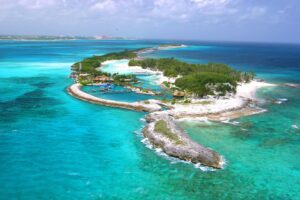








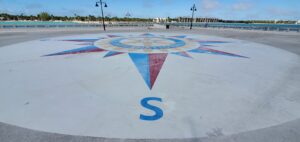

 Private aircraft safety reviews after a known model crash are an important part of the emptylegs.net client safety commitment. The recent incident over Washington, D.C., where a pair of U.S. F-16 fighter jets generated a resounding sonic boom while attempting, unsuccessfully, to establish contact with an unresponsive pilot of a privately-owned Cessna jet that had strayed into restricted airspace on Sunday triggers the review. The Cessna subsequently descended and crashed in a rural area of Virginia. The reason behind the Cessna’s presence in Washington remains unclear, but the owner of the aircraft suggested that a possible loss of cabin pressure could have rendered the pilot and passengers unconscious, potentially leading to the autopilot assuming control. Promptly dispatched from Joint Base Andrews, the F-16s were deployed to intercept the aircraft. Defense officials have clarified that the fighter jets were not responsible for the crash of the Cessna.
Private aircraft safety reviews after a known model crash are an important part of the emptylegs.net client safety commitment. The recent incident over Washington, D.C., where a pair of U.S. F-16 fighter jets generated a resounding sonic boom while attempting, unsuccessfully, to establish contact with an unresponsive pilot of a privately-owned Cessna jet that had strayed into restricted airspace on Sunday triggers the review. The Cessna subsequently descended and crashed in a rural area of Virginia. The reason behind the Cessna’s presence in Washington remains unclear, but the owner of the aircraft suggested that a possible loss of cabin pressure could have rendered the pilot and passengers unconscious, potentially leading to the autopilot assuming control. Promptly dispatched from Joint Base Andrews, the F-16s were deployed to intercept the aircraft. Defense officials have clarified that the fighter jets were not responsible for the crash of the Cessna.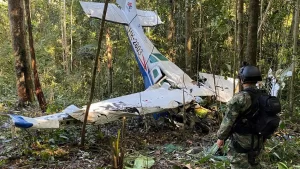
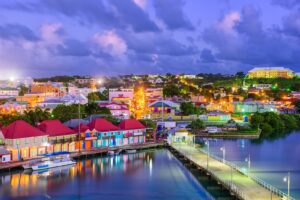
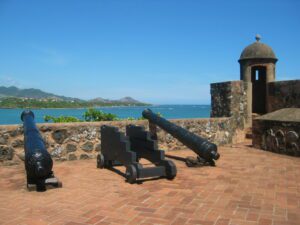 Tomorrow is our first stop on our 10-day Eastern Caribbean cruise, the beautiful city of Puerto Plata in the Dominican Republic. Located on the northern coast of the island, Puerto Plata is known for its stunning beaches, vibrant culture, and rich history. When we arrive at port, we will be greeted by the warm sun, crystal-clear waters, and the lively rhythms of merengue music. I’m sure it will be an unforgettable experience. One of the highlights of our visit will be to explore the historic Fort San Felipe, which was built in the 16th century to protect the city from pirates and foreign invaders. The fort is now a museum, where we will learn about the history of the island and its many battles.
Tomorrow is our first stop on our 10-day Eastern Caribbean cruise, the beautiful city of Puerto Plata in the Dominican Republic. Located on the northern coast of the island, Puerto Plata is known for its stunning beaches, vibrant culture, and rich history. When we arrive at port, we will be greeted by the warm sun, crystal-clear waters, and the lively rhythms of merengue music. I’m sure it will be an unforgettable experience. One of the highlights of our visit will be to explore the historic Fort San Felipe, which was built in the 16th century to protect the city from pirates and foreign invaders. The fort is now a museum, where we will learn about the history of the island and its many battles. The final stop will be the Ron Macorix Factory just in case we need something to go along with the Cigars and the Chocolate. The factory is dedicated to producing high-quality, premium rum using traditional methods and locally sourced ingredients. We will take a guided tour of the facility, which includes a walk through the rum-making process. The tour begins with an introduction to the history of rum and the origins of sugar cane, the key ingredient used in rum production. We can then observe the various stages of rum production, from the fermentation and distillation of the sugar cane juice to the aging and blending of the finished product. We will get the chance to taste the different types of rum produced at the factory, including dark and light rum, as well as flavored varieties. I think you can also sample a variety of rum-based cocktails made on-site, using the factory’s premium rum as a base. The Ron Macorix Factory also offers workshops where visitors can learn to make their own rum cocktails and traditional Dominican dishes, under the guidance of experienced chefs and bartenders.
The final stop will be the Ron Macorix Factory just in case we need something to go along with the Cigars and the Chocolate. The factory is dedicated to producing high-quality, premium rum using traditional methods and locally sourced ingredients. We will take a guided tour of the facility, which includes a walk through the rum-making process. The tour begins with an introduction to the history of rum and the origins of sugar cane, the key ingredient used in rum production. We can then observe the various stages of rum production, from the fermentation and distillation of the sugar cane juice to the aging and blending of the finished product. We will get the chance to taste the different types of rum produced at the factory, including dark and light rum, as well as flavored varieties. I think you can also sample a variety of rum-based cocktails made on-site, using the factory’s premium rum as a base. The Ron Macorix Factory also offers workshops where visitors can learn to make their own rum cocktails and traditional Dominican dishes, under the guidance of experienced chefs and bartenders. 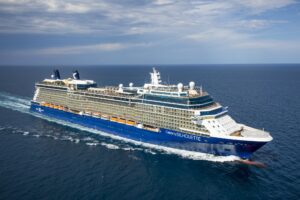 Planning a Strategic Retreat in today’s fast-paced business world means taking a break from the daily grind to recharge and refocus. Many successful entrepreneurs and business owners find that stepping away from their work for a short period of time can actually increase their productivity and creativity. In fact, taking a vacation or planning a strategic retreat can be a smart business move. In this case, Katie and I have decided to take a 10-day Eastern Caribbean cruise to not only relax and recharge, but also to do some strategic business planning for our next ventures. Of course, the rest of the Emptylegs team will be available for any air charter needs or request while we travel. At first we considered an Eastern Caribbean island hopping yacht charter, but we sailed last year on the Celebrity Summit, and we remembered what a great trip we had during my birthday celebration. We searched and found a great cruise on the only Cruise Line we will sail, Celebrity Cruises, and decided to add more points to our Captains Club balance booking the trip. We chose the 10 day Eastern Caribbean Cruise aboard the Celebrity Silhouette because it includes some of our favorite private jet travel islands, which will allow us to mix business with pleasure.
Planning a Strategic Retreat in today’s fast-paced business world means taking a break from the daily grind to recharge and refocus. Many successful entrepreneurs and business owners find that stepping away from their work for a short period of time can actually increase their productivity and creativity. In fact, taking a vacation or planning a strategic retreat can be a smart business move. In this case, Katie and I have decided to take a 10-day Eastern Caribbean cruise to not only relax and recharge, but also to do some strategic business planning for our next ventures. Of course, the rest of the Emptylegs team will be available for any air charter needs or request while we travel. At first we considered an Eastern Caribbean island hopping yacht charter, but we sailed last year on the Celebrity Summit, and we remembered what a great trip we had during my birthday celebration. We searched and found a great cruise on the only Cruise Line we will sail, Celebrity Cruises, and decided to add more points to our Captains Club balance booking the trip. We chose the 10 day Eastern Caribbean Cruise aboard the Celebrity Silhouette because it includes some of our favorite private jet travel islands, which will allow us to mix business with pleasure.